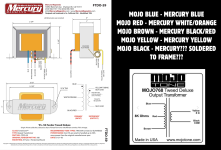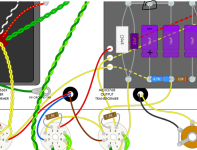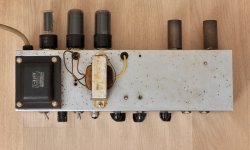Fingolfen
Well-known member
Okay - so... say Steggi wanted to be "fancy" and use an Mercury Magnetics transformer for the 5E3 build... Looking at the wiring diagram:

The red, blue, brown, yellow, and black are all pretty clear...
But the MM transformer has different wire colors... and only has four coming through the bottom of the chassis... here's what I'm gleaning from the spec sheet:

Question is what would one do to make the black connections to the MM output transformer? Would you run a separate wire and solder it to the self lead on the OT?

The red, blue, brown, yellow, and black are all pretty clear...
But the MM transformer has different wire colors... and only has four coming through the bottom of the chassis... here's what I'm gleaning from the spec sheet:

Question is what would one do to make the black connections to the MM output transformer? Would you run a separate wire and solder it to the self lead on the OT?




